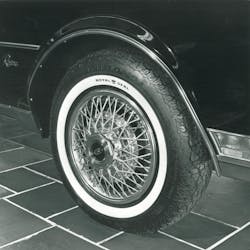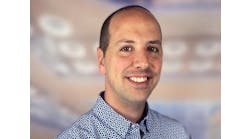You may have read recently that Ford Motor Co. has embraced Michelin self-sealing tire technology. It will equip two versions of the 2020 Explorer with Michelin Selfseal tires.
It’s not often a vehicle manufacturer plays up tires in a press release, but Ford clearly sees the marketing opportunities here. Just look at the headline: “Spare the flat tire fiascos: All-new Ford Explorer introduces Michelin Selfseal tires designed to keep road trips rolling.”
Promoting self-sealing tires on a family vehicle like the Explorer makes sense, and Ford makes the most of it, rather dramatically, I might add:
“In the time it takes you to read this sentence, another vehicle tire was punctured.
Road trip sidetracked. Commute delayed. Across the United States, flat tires will leave millions of motorists every year on the side of the road, jack in hand and gravel on knees.
According to Ford, Michelin Selfseal tires “seal 90% of tread punctures up to a quarter-inch in diameter, slowing the loss of air pressure to less than 15 pounds per square inch (psi) per week. Results are based on Michelin internal analytical testing.” If your tire is inflated to 35 psi, then the vehicle owner has about a week to get it repaired or replaced. Run-flats, in contrast, can be safely driven only for about 50 miles at a maximum speed of 55 mph after the tire loses air.
Michelin North America Inc. says its technology utilizes a natural reddish brown rubber sealant material “that has no impact on rolling resistance and maintains all other tire performances.” Maybe this makes the sealant truly unique, but I couldn’t help but think of Uniroyal self-sealing tires, which have been around for more than 35 years.Uniroyal Tire Co.’s Royal Seal was used in original equipment tires on luxury cars in the 1980s. Then came NailGard at the replacement level in the late 1990s.
“Uniroyal tires with NailGard instantly seal 90% of tread punctures up to 3/16-inch in diameter,” said Uniroyal ads at the time. Sound familiar? Michelin’s new Selfseal tires have increased the fillable puncture by 1/16-inch in the last 20 years.
Michelin, which had purchased Uniroyal Goodrich Tire Co. in 1989, also claimed NailGard sealed the punctures permanently. The company even promoted NailGard technology on its 83-foot Uniroyal tire off I-94 in Allen Park, Mich.
I mention Selfseal because it is the latest sealant technology introduced into the U.S. tire industry. Others include ContiSeal (not to be confused with GenSeal) by Continental AG, DuraSeal by Goodyear Tire & Rubber Co., Sealguard by Hankook Tire Co. Ltd., and Seal Inside by Pirelli Tire LLC.
None of the tire sealant technologies result in permanent repairs, so it sounds to me like they will eventually need to meet Tire Industry Association (TIA) repair standards. TIA says the only way to properly repair a tire is to “demount it from the rim so it can inspected on the inside, remove the damaged material, fill the void with rubber, and seal the innerliner with a repair unit.” (A Michelin spokesperson told me a proper repair does not impair the remaining Selfseal sealant.)
“A plug by itself or a patch by itself is not an acceptable repair because the plug does not permanently seal the innerliner and the patch does not fill the void left by the penetrating object, which allows water to enter the body of the tire,” says TIA.
In addition, punctures in the shoulder or sidewall of the tire are not repairable.
Keep these standards in mind when dealing with tires that feature new, or kind of new, tire sealant technology. If you have experience repairing Uniroyal Royal Seal and NailGard tires, you probably know what to do. ■
If you have any questions or comments, please email me at [email protected].


